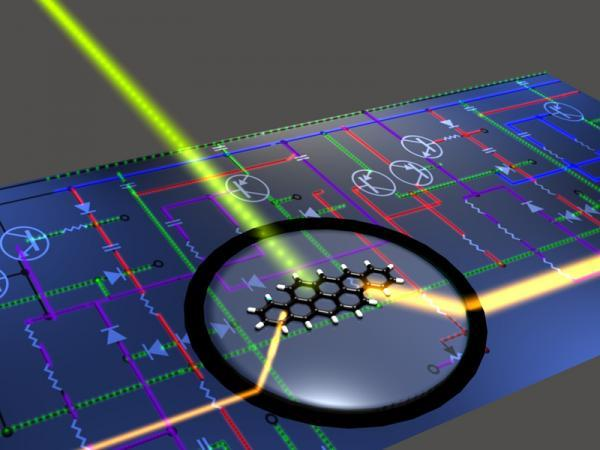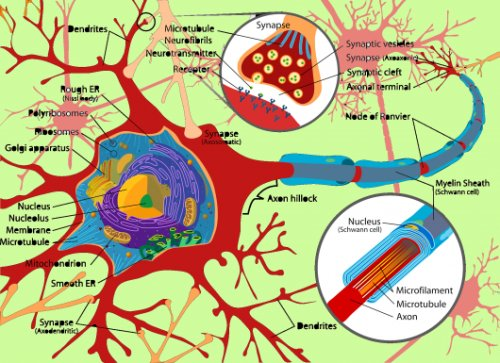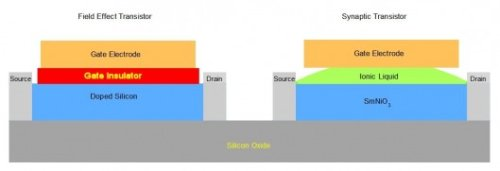The First Artificial Synapse (Transistor) Capable of Autonomous Learning

Carrying out research that could result in a completely new approach to the implementation of artificial intelligence, researchers at the Harvard School of Engineering and Applied Sciences (SEAS) have developed a new type of transistor, a transistor capable of self-learning in the process of its operation, which makes its similar to a nervous synapse.
Called synaptic transistor, this device self-optimizes its electrical and electronic characteristics in accordance with the functions it performed in the past.
One of the most remarkable features of the human brain or other highly organized living being is self-learning, remembering what it does. If a person is forced to perform a completely new job for him, then on the first day he will act erratically and constantly make mistakes. But, in a week or two, this person will perform all the work on the "autopilot", performing the whole series of actions, completely without thinking about it.
All this is due to the plasticity of the brain, the ability of the brain to dynamically rearrange its structure, forming new synaptic connections between neurons or "redeveloping" existing connections.
Most of the plasticity of the brain is a consequence of changes in about 100 trillion synapses, which are the interrelationships between brain nerve cells. When a person performs the same actions, the synaptic connections responsible for this activity are strengthened and their number increases, which leads to the appearance of entire "roads" from synapses connecting certain parts of the brain.

When a certain neuron repeatedly sends a certain signal to another neuron through a synapse, then this synapse, after a while, rebuilds its structure in such a way as to strengthen this kind of signal transmitted to it.
The synaptic transistor created by Harvard scientists imitates this behavior of the synapse. To do this, the transistor has a special structure, which in many respects repeats the structure of a conventional field-effect transistor, with the exception of a small amount of a special ionic liquid located in the gap between the isolated gate of the transistor and its conducting channel. The synaptic transistor channel is made of samarium nickelate (SmNiO3), and not of silicon doped, as in conventional field effect transistors.

Unfortunately, due to the presence of the function of self-learning, a synaptic transistor has a lower response rate than a field-effect transistor. By reaction here is meant a change in the strength of the electric current flowing through the channel of the transistor in response to a change in the electrical potential at the control electrode, the gate. Due to the presence of ionic liquid, the transistor can memorize what it did in the past and correct the conductivity of its channel, which is achieved by the movement of oxygen ions saturating the channel material of the transistor.
The electrical analogue of the "strengthening" of the synapse is the increase in the electrical conductivity of the synaptic transistor channel. And when changing the kind of functions performed by the transistor, more accurately, if the characteristics of the signals passing through it change, the reverse situation can occur, when the conductivity of the transistor channel will be reduced due to the outflow of oxygen ions back to the ionic liquid.

It should be noted that the synaptic transistor is designed to work with continuous analog signals, rather than intermittent digital data, which are handled well enough by simple field effect transistors.
This ability gives synaptic transistors, which are one of the types of artificial synapses, great flexibility in independent preliminary search for methods of solving a certain problem and in further improving their work to solve the same problem.
Unfortunately, the physical structure of the Harvard synaptic transistor can not provide independent proper control of the value of the conductivity of its channel. Therefore, simple external electronic circuits are used to create the necessary time delays and form impulses of the desired shape that transfer oxygen ions. Nevertheless, this is not an obstacle to the creation on the basis of synaptic transistors of complex circuits of the type of neural networks that will be able to independently develop a special type of response to certain values of input signals, and to develop this reaction not according to the program previously laid down in the network structure, but on the basis of experience acquired in the course of performing other tasks.
New synaptic transistors can become a starting point for the development of artificial intelligence systems of a new generation, built not on "smart" software algorithms, but "wired up" in the very architecture of the computer. From another point of view, the circuits assembled from millions of tiny synaptic transistors will be able to translate computational parallelism technologies to a qualitatively new level of efficiency.
References for Text and Images:
- https://www.slideshare.net/vennila12/vlsi-design-mosfet
- http://www.notey.com/blogs/artificial-synapse
- http://www.newelectronics.co.uk/electronics-news/exploration-into-transistor-reliability-leads-to-new-discoveries/167556/
- https://www.extremetech.com/computing/256467-intel-unveils-new-neuromorphic-self-learning-chip-codenamed-loihi
- http://www.eenewseurope.com/news/intel-launches-self-learning-processor
Support @steemstem and the #steemstem
project - curating and supporting quality STEM
related content on Steemit

Great article! The machines are alive...
It's so cool being able to read about this being developed. I didn't know science was close to being able to create something like this.
Wow, this is incredible..... AI getting built into physical electrical components...wow....technology is advancing so quickly. I wonder how soon will this take to become more mainstream???

Good educational information should be shared so your post has been Upvoted and Resteemed. Hope more people get to read your blog.
Nice post @marverick984! I hope that robots won't destroy the humanity :)
Do you believe that we will be able to see artificial intelligence systems in the near future?